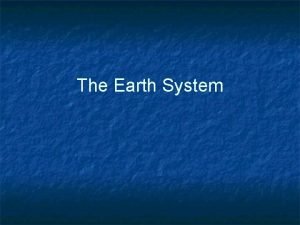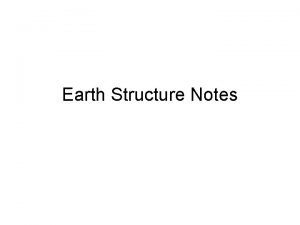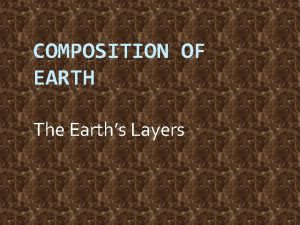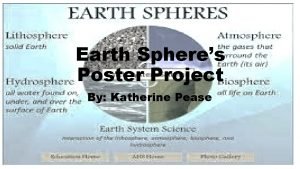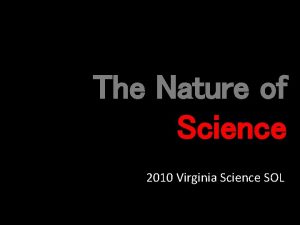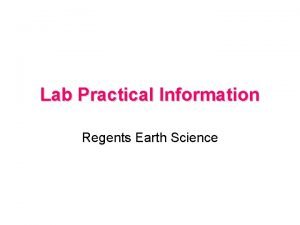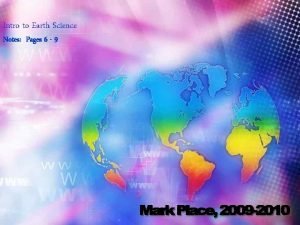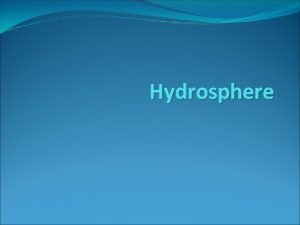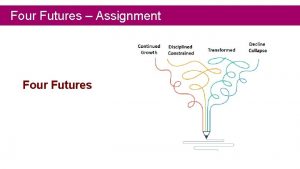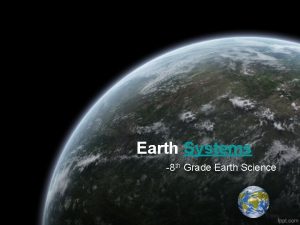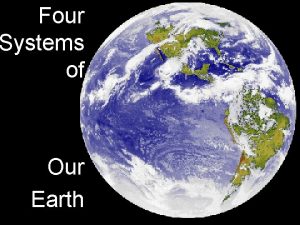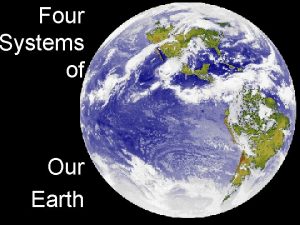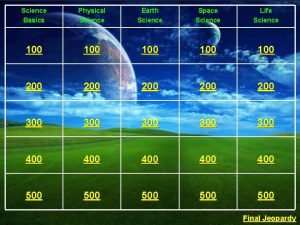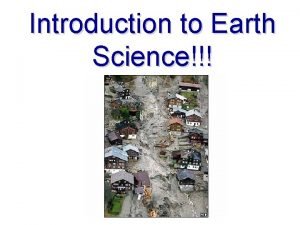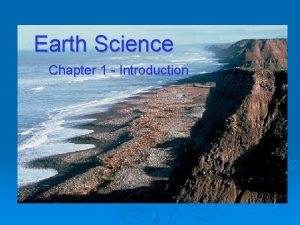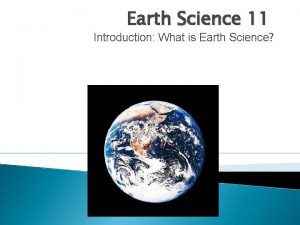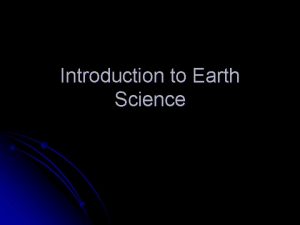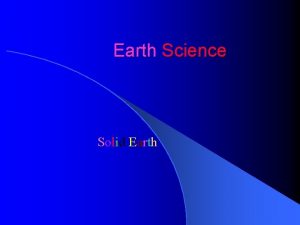What is Earth Science Earth Science is four




















- Slides: 20

What is Earth Science?

Earth Science: is four sciences rolled into one!

The first is: GEOLOGY which studies the Earth's and surface. interior The study of the materials that make up Earth and the processes that form and change these materials is the branch of Earth science known as geology. Geologists identify rocks, study glacial movements, interpret clues to Earth’s 4. 6 billion-year history, and determine how forces change our planet, among many other things

The second is: ASTRONOMY which studies the universe, stars, planets, and moons. Astronomy is the study of objects beyond Earth’s atmosphere. Prior to the invention of sophisticated instruments such as the telescope, many astronomers merely described the locations of objects in space in relation to one another. Today, these Earth scientists study the universe and everything in it, including Earth, its neighbors, and other bodies in the universe.

The third is: METEOROLOGY which studies the Earth's atmosphere: weather and storms. The branch of Earth science that studies the air that surrounds our planet is called meteorology. Meteorologists study the forces and processes that cause the atmosphere to change to produce weather. These Earth scientists also try to predict the weather and how changes in weather might affect Earth’s climate.

The fourth is: OCEANOGRAPHY which studies the Earth's oceans. The study of Earth’s oceans, which cover nearly three-fourths of the planet, is called oceanography. Oceonographers study the creatures that inhabit salty water, measure different physical and chemical properties of the oceans, and observe various processes in these bodies of water. Some oceanographers study the effects of human activities on Earth’s saltwater bodies.

2. What is an Earth Science Event?

An EVENT is: An Occurrence on Earth that causes a change.

Here are some EVENTS for GEOLOGY:

Here are some EVENTS for METEOROLOGY:

Here are some EVENTS for ASTRONOMY:

Here are some EVENTS for OCEANOGRAPHY:

Earth’s Systems What are the four main Earth systems?

The Lithosphere • Earth’s lithosphere is the rigid outer shell of the planet and includes the crust and the solid, uppermost part of the layer below the crust, the mantle.

The Lithosphere • There are two kinds of crust: continental crust and oceanic crust. • Earth’s continental crust is made mostly of a rock called granite. Earth’s mantle is mainly composed of a rock called peridotite. • Some of Earth’s upper mantel behaves like a rigid solid while other parts of this layer are partially molten and flow like a soft plastic. This partially molten layer is the asthenosphere.

The Lithosphere • Beneath Earth’s mantle is the core, which can be divided into two parts: an outer, liquid part and a solid, inner part. • Earth’s core is thought to be made of iron and nickel. • While Earth’s core and asthenosphere are not parts of the lithosphere, they do interact with this system of Earth to produce many of the features at the planet’s surface (i. e. volcanoes, mountains, and earthquakes)

The Hydrosphere • The water in Earth’s oceans, seas, lakes, rivers, and glaciers, as well as water in the atmosphere, makes up the hydrosphere. • About 97 percent of Earth’s water exists as salt water; the remaining 3 percent is freshwater contained in glaciers, in lakes and rivers, and beneath the Earth’s surface as groundwater. • About three fourths of all freshwater is contained in glaciers and icebergs. • Only a fraction of Earth’s total amount of freshwater is in lakes and rivers.

The Atmosphere • The blanket of gases that surrounds our planet is called the atmosphere. Among other living things, Earth’s atmosphere is necessary for respiration by most living things, protects Earth’s inhabitants from harmful radiation from the Sun, and helps to keep the planet at a temperature suitable for life.

The Atmosphere • Earth’s atmosphere contains about 78 percent nitrogen and 21 percent oxygen. • The remaining 1 percent of gases in the atmosphere include water vapor, argon, carbon dioxide, and other trace gases.

The Biosphere • The biosphere includes all organisms on Earth as well as the environments in which they live. • Most organisms exist within a few meters of Earth’s surface, but some live deep beneath the ocean’s surface, and others live high atop Earth’s mountains.
 Earth science branches
Earth science branches Hashim: what's your favorite subject
Hashim: what's your favorite subject What is a side of a shape
What is a side of a shape 4 eyes in 4 hours
4 eyes in 4 hours How can you compare terrarium to an earth system
How can you compare terrarium to an earth system Four spheres of the earth
Four spheres of the earth Earth structure notes
Earth structure notes Four layers of the earth
Four layers of the earth Living soil vs dead soil
Living soil vs dead soil Earth's spheres poster
Earth's spheres poster The four spheres
The four spheres Four oceans of the earth
Four oceans of the earth Five branches of oceanography
Five branches of oceanography What letters designate an air mass from the gulf of mexico?
What letters designate an air mass from the gulf of mexico? Earth science sol 2010
Earth science sol 2010 Earth science lab practical review
Earth science lab practical review Earth science regents part d
Earth science regents part d Earth science regents lab practical
Earth science regents lab practical Earth science grade 9
Earth science grade 9 Dynamic equilibrium earth science
Dynamic equilibrium earth science Hydrosphere definition earth science
Hydrosphere definition earth science




